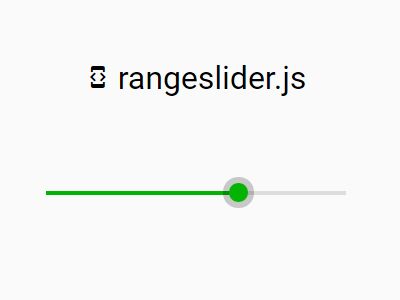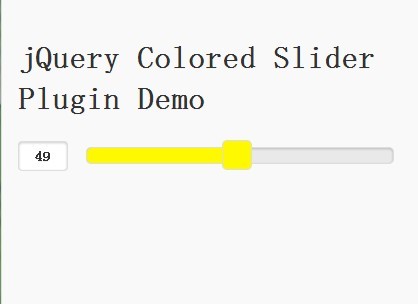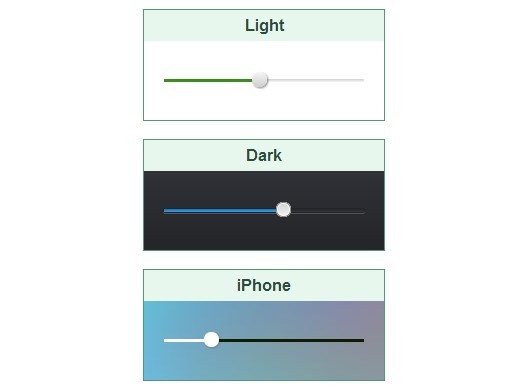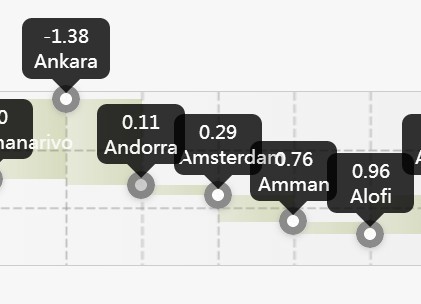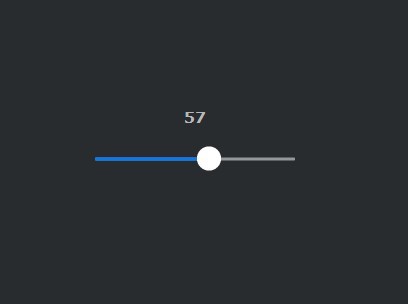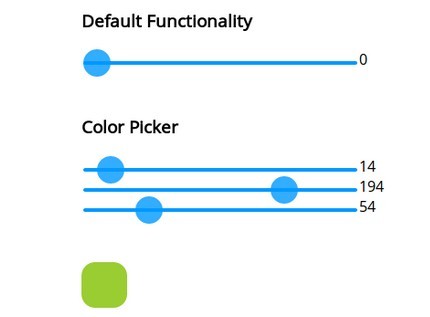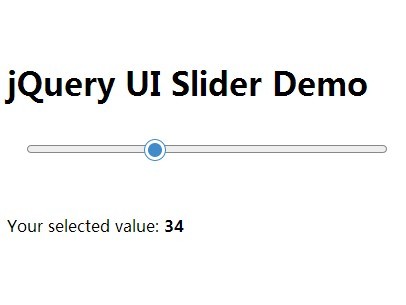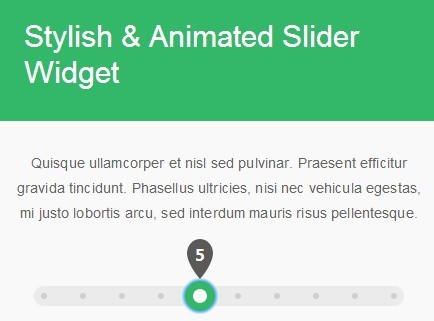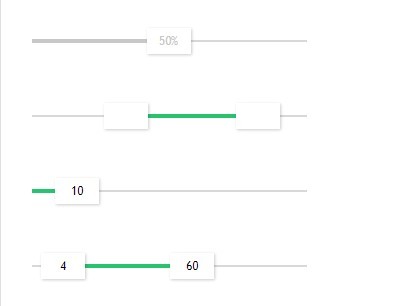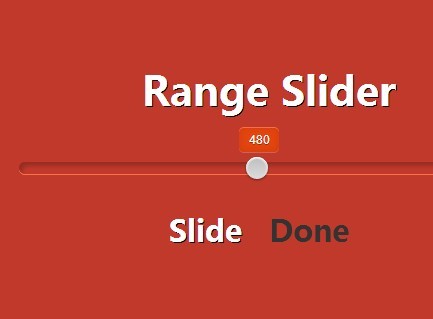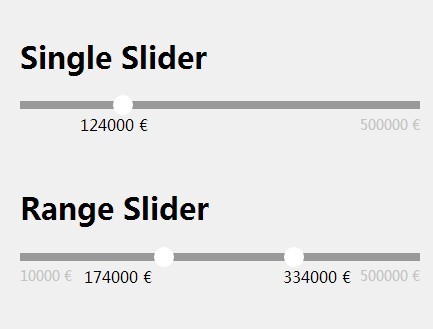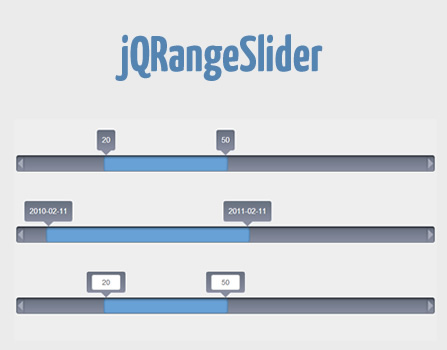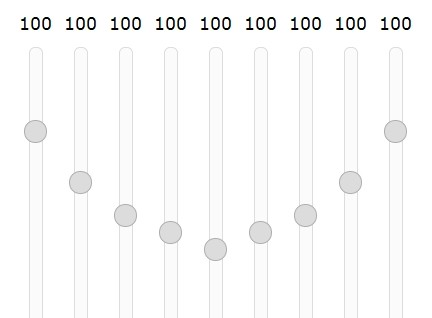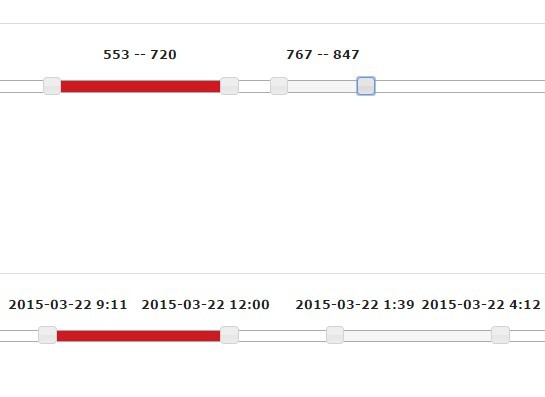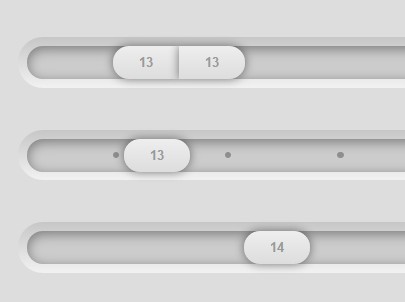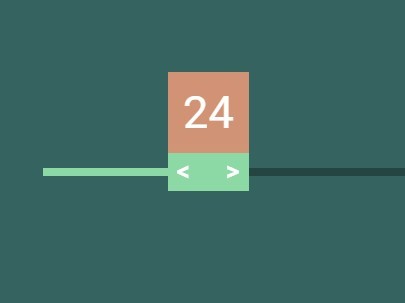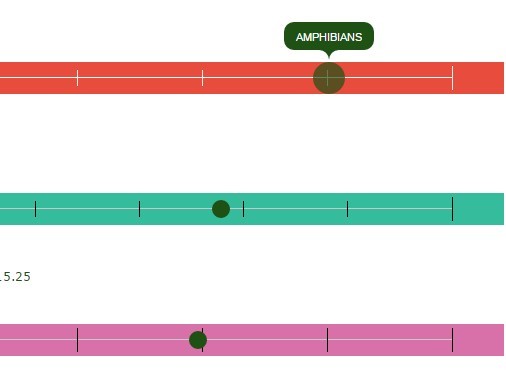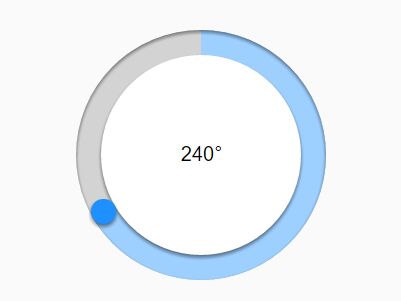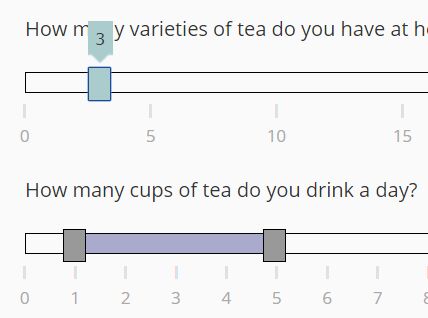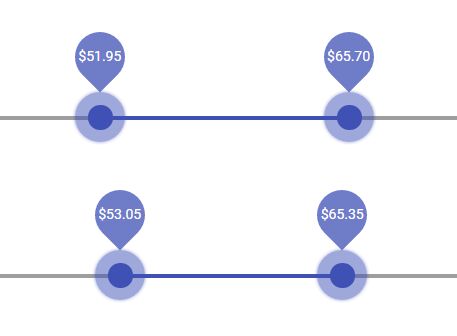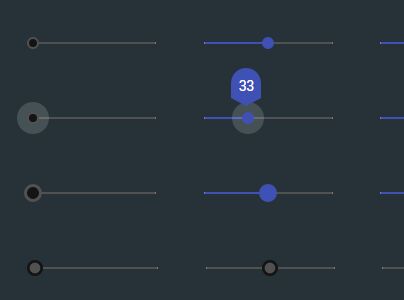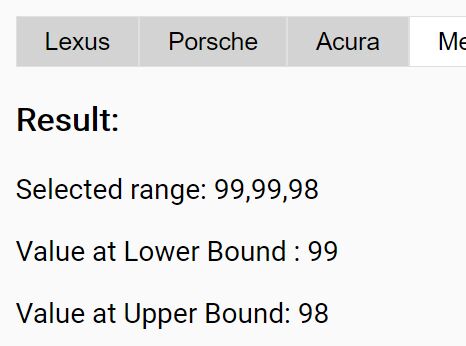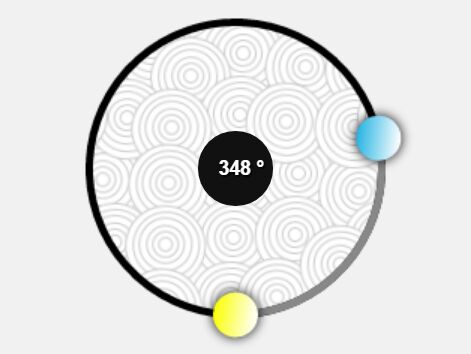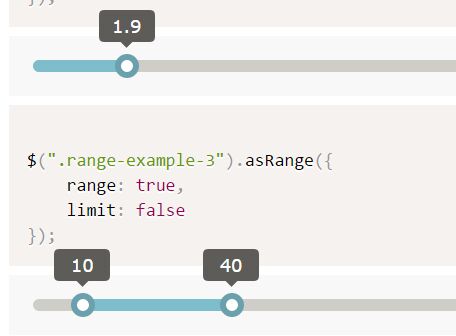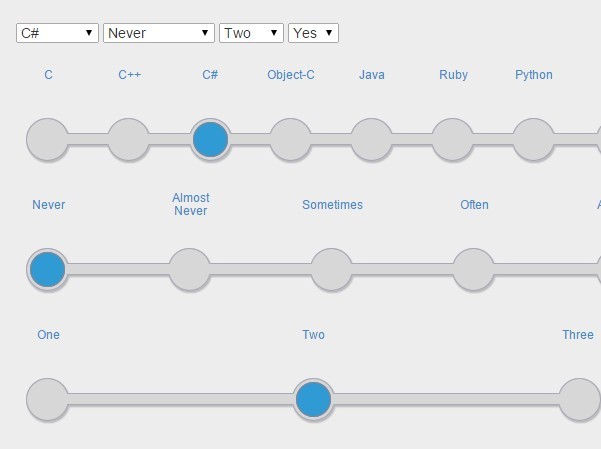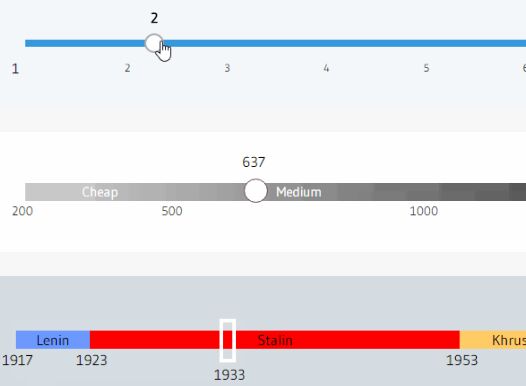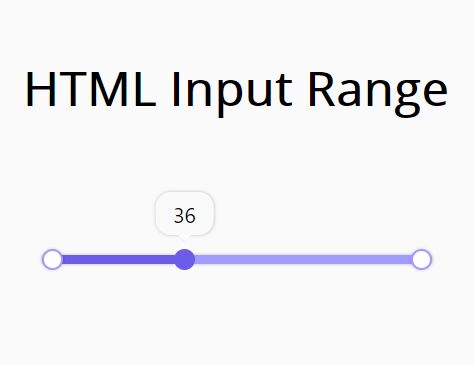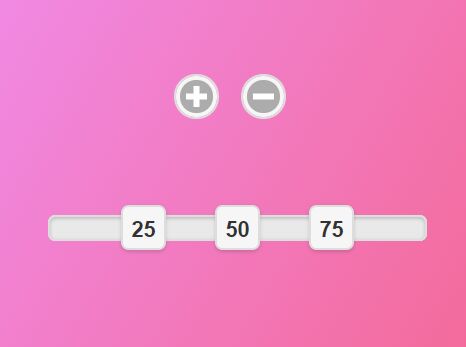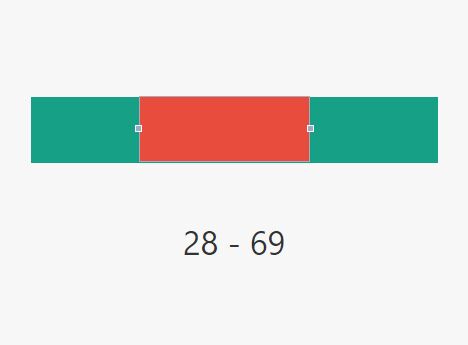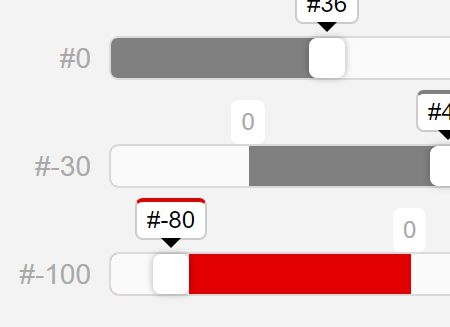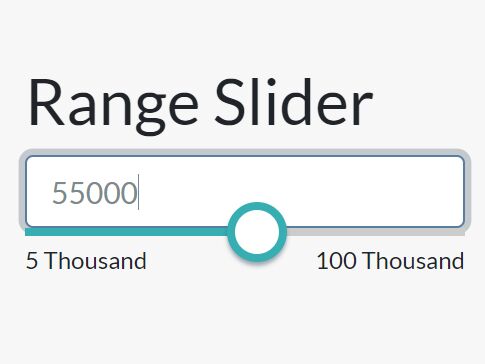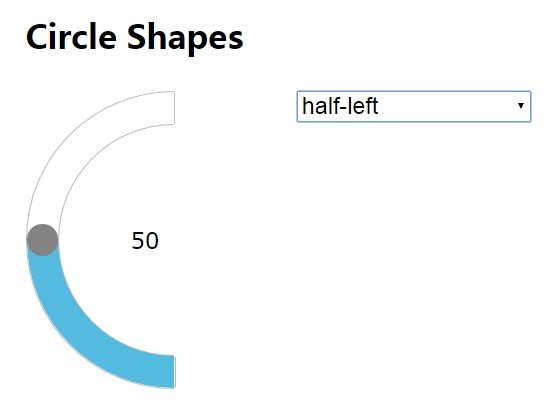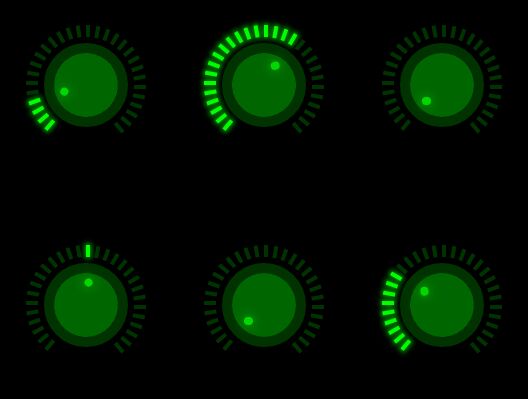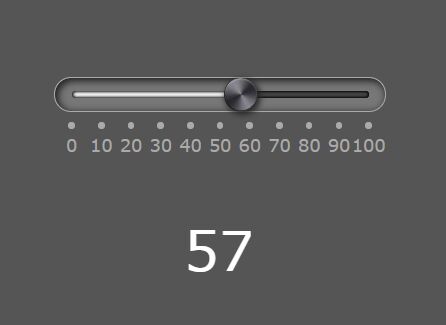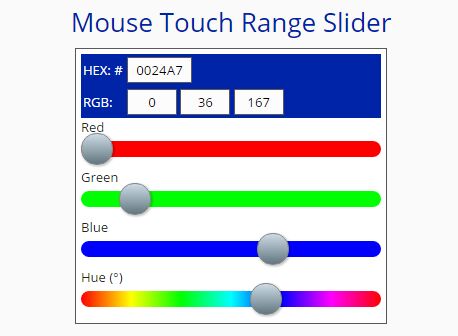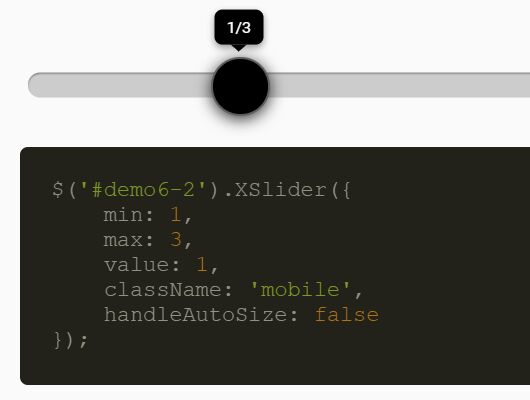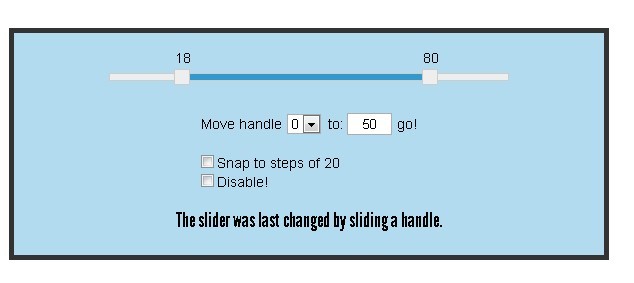Range Slider
A JS & JQuery implementation of a range slider, inspired by Android's range sliders.
======= Live Demo =======
Getting Started
Include JQuery and relevant files in your html <head> tag:
<!-- Rangeslider files --> <script src="https://ajax.googleapis.com/ajax/libs/jquery/1.12.4/jquery.min.js"></script> <link rel="stylesheet" type="text/css" href="rangeslider/rangeslider.min.css"> <script src="rangeslider/rangeslider.min.js"></script>Make an appropriately sized div for the rangeslider within your html <body>:
<div id="slider_1" style="width:200px;"></div>Apply RangeSlider to a JQuery object within a script:
var slider = new RangeSlider($("#slider_1"), { // Colours fgColour: "#04b404", // Foreground colour bgColour: "#ddd" , // Background colour // Starting position percentage: 20, // Events - will run on touch & mouse triggers onDown: function(e, percentage) { console.log("Clicked at", percentage + "%"); }, onMove: function(e, percentage) { console.log("Moved to", percentage + "%"); }, onUp: function(e, percentage) { console.log("Slider control ended"); } });Library functions
The following functions can be called on the RangeSlider object after it has been initialised:
// Disable the range slider // This will disable slider movement and events slider.disable(); // Enable the range slider slider.enable(); // Change the position of the slider to 30% slider.setPercentage(30);Development
Install all npm modules:
npm install .This project uses grunt to minify the javascript and css files from src/ and move them into dist/rangeslider/.
To build:
gruntTo build every time a script or stylesheet is changed:
grunt watch